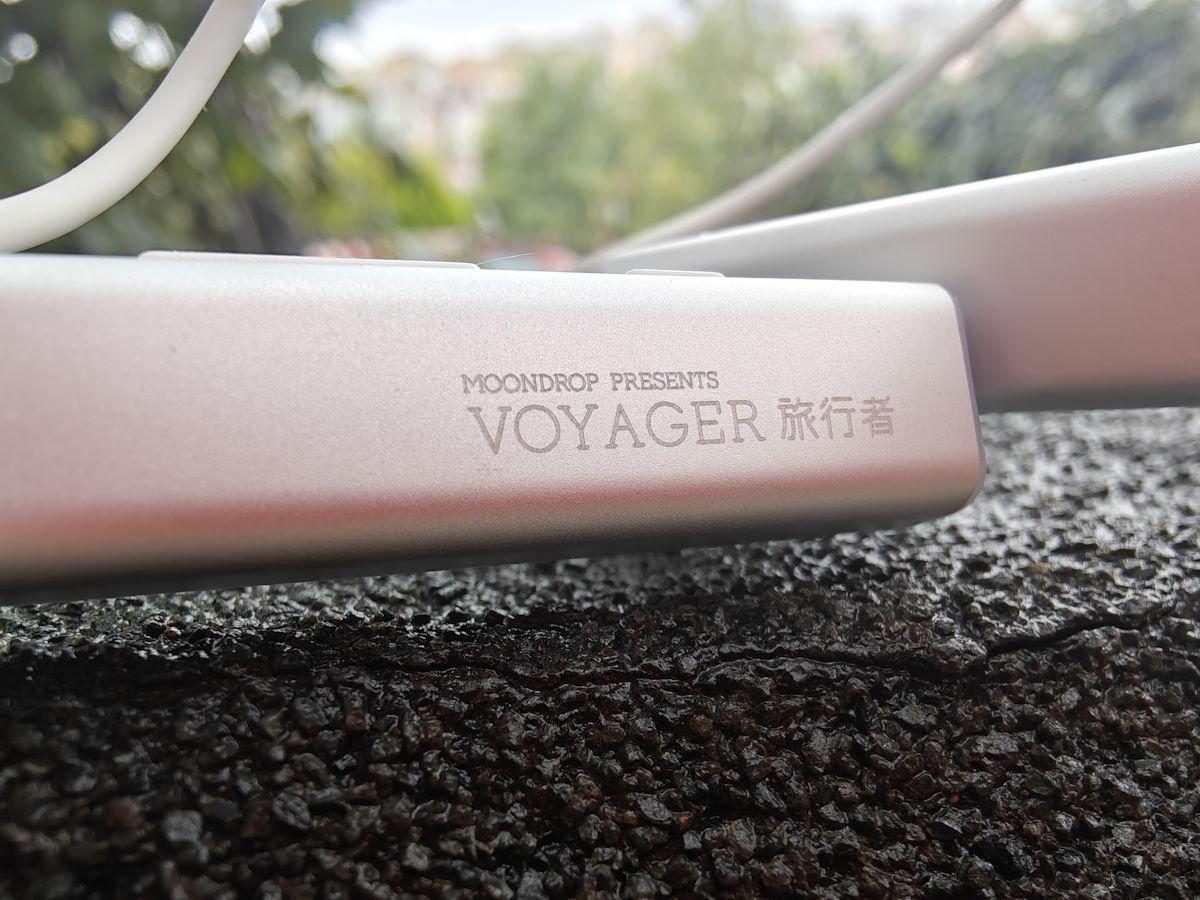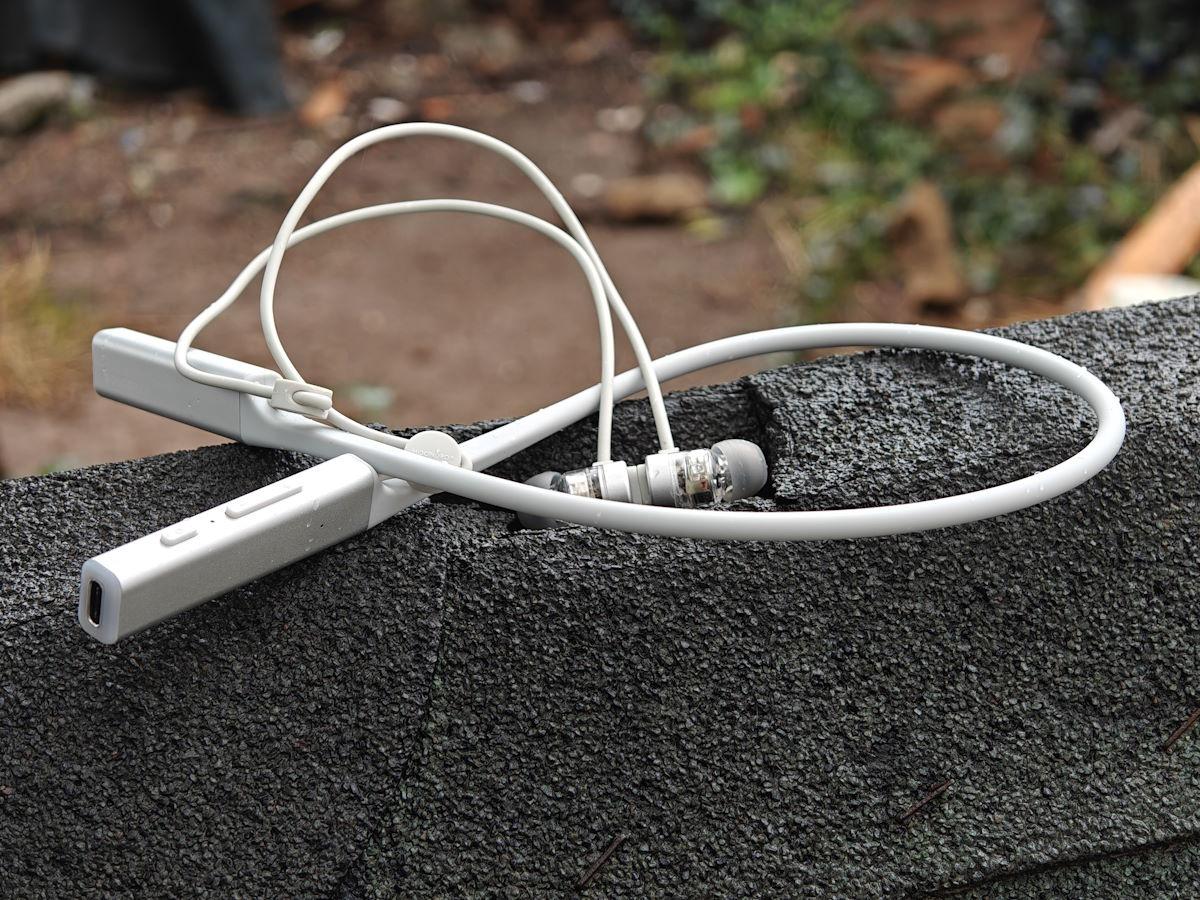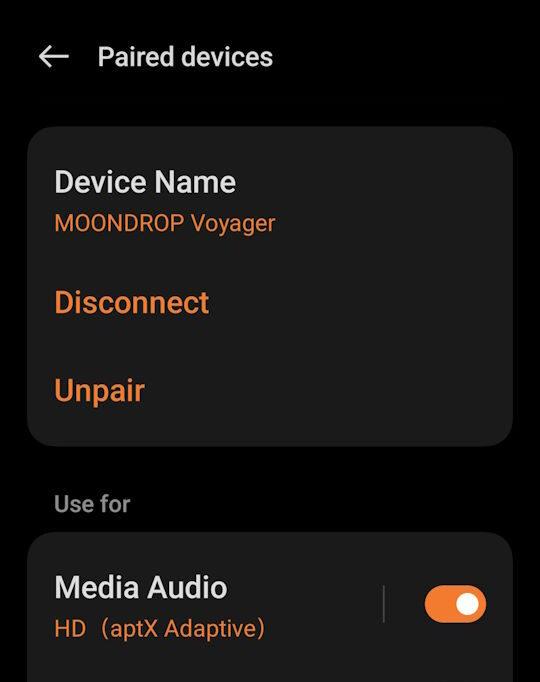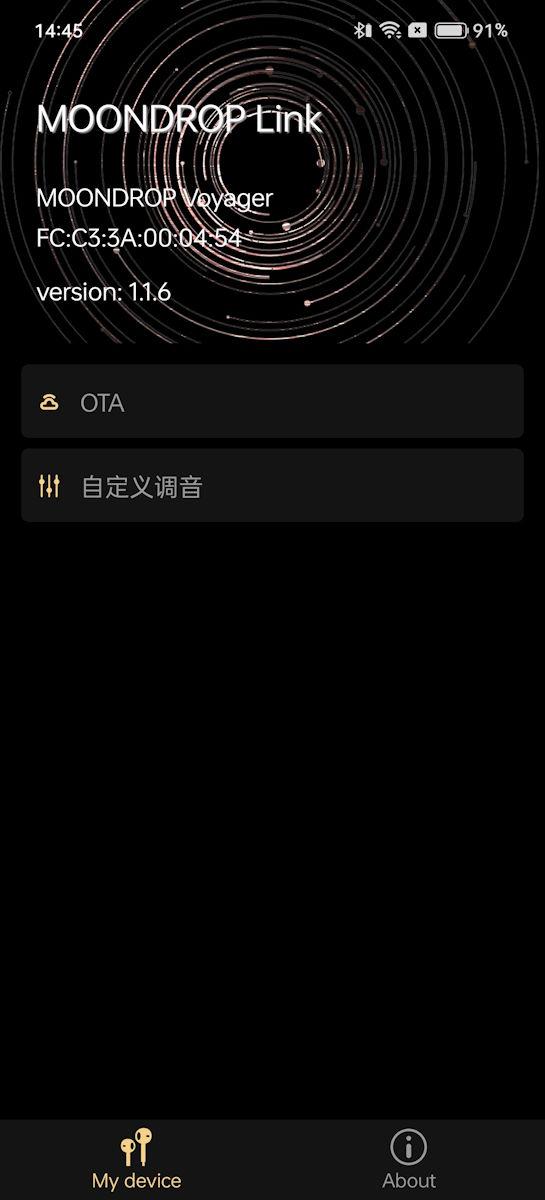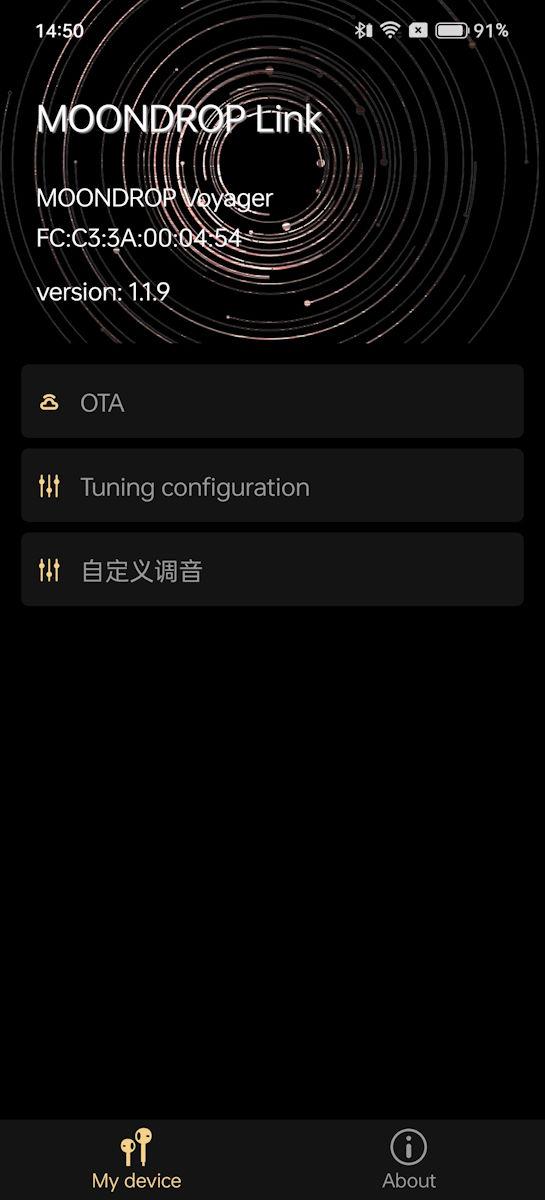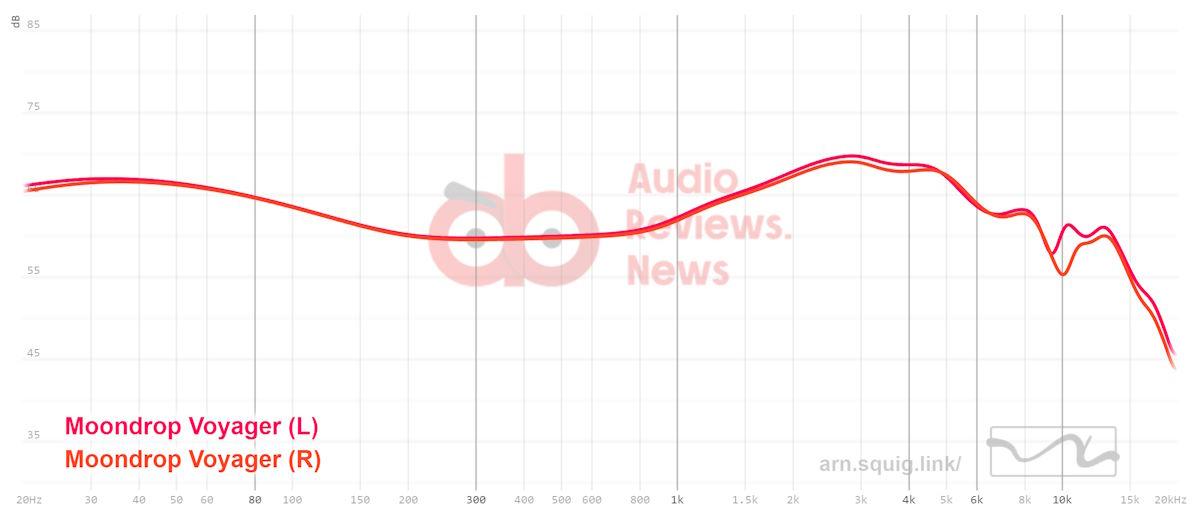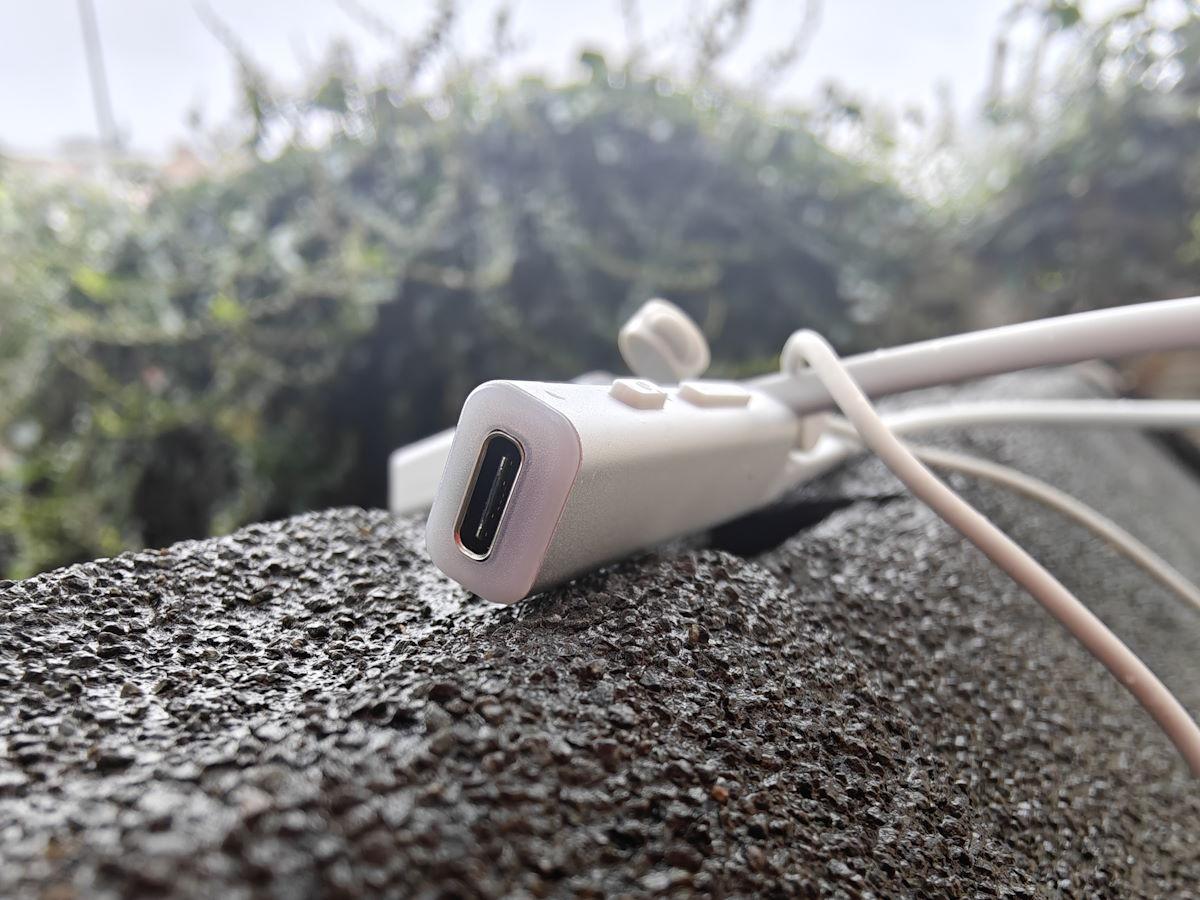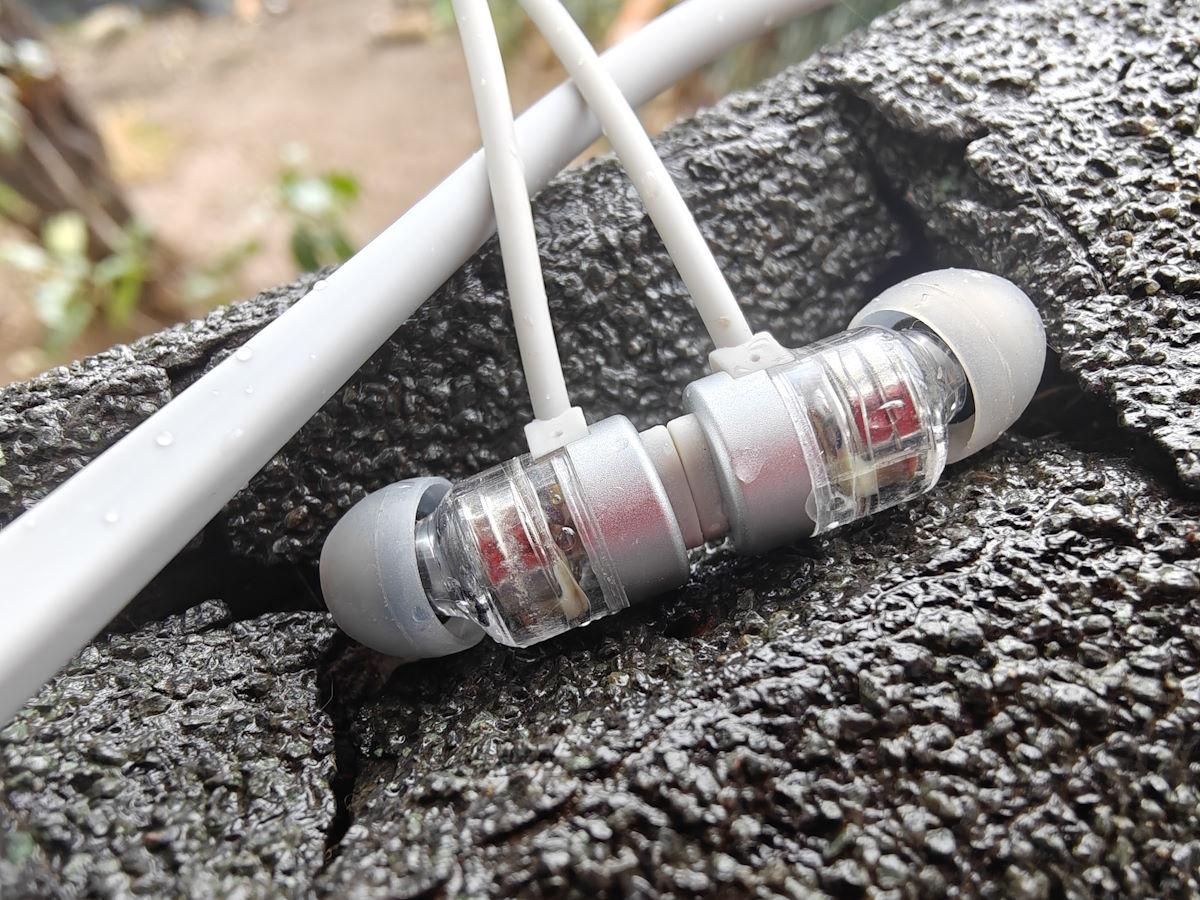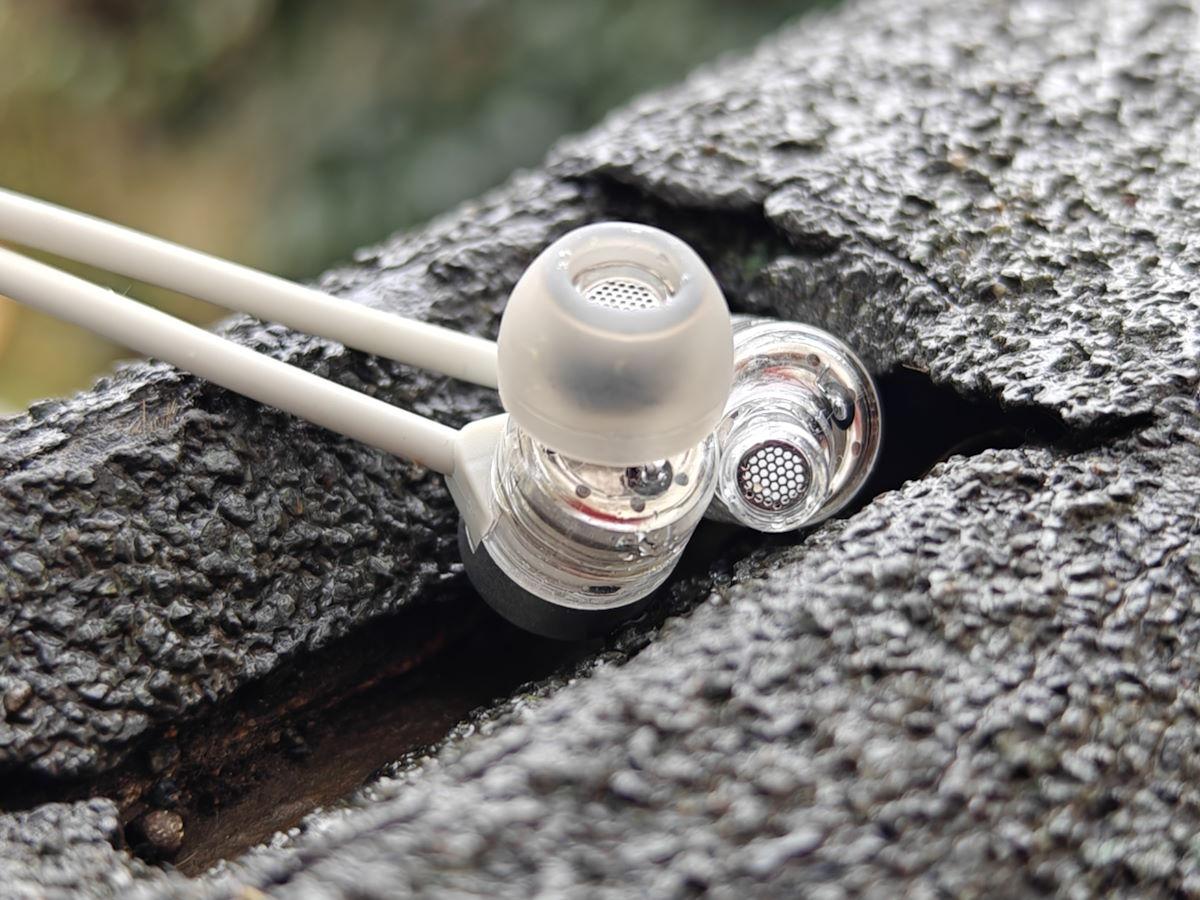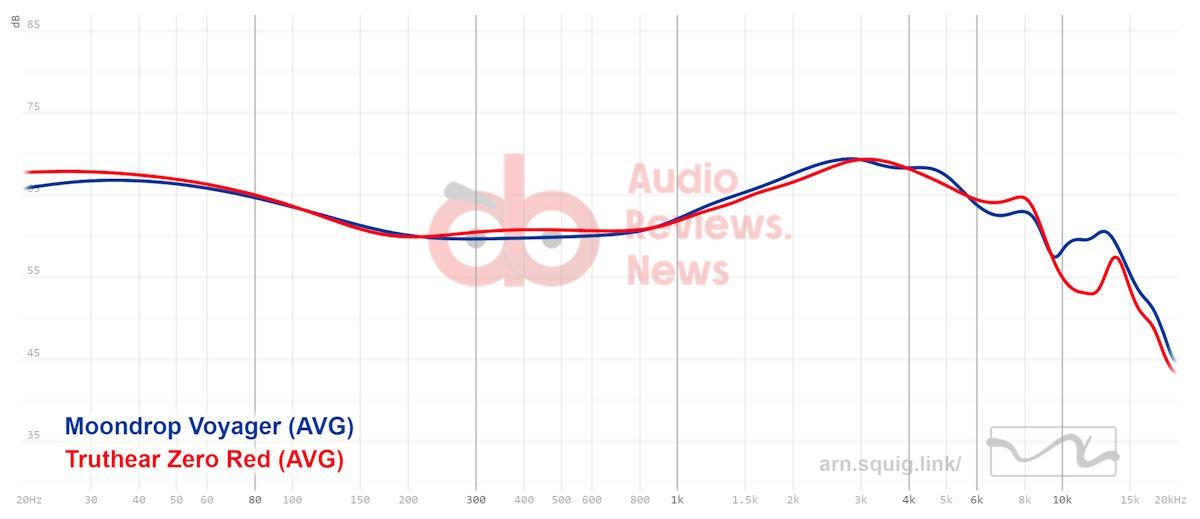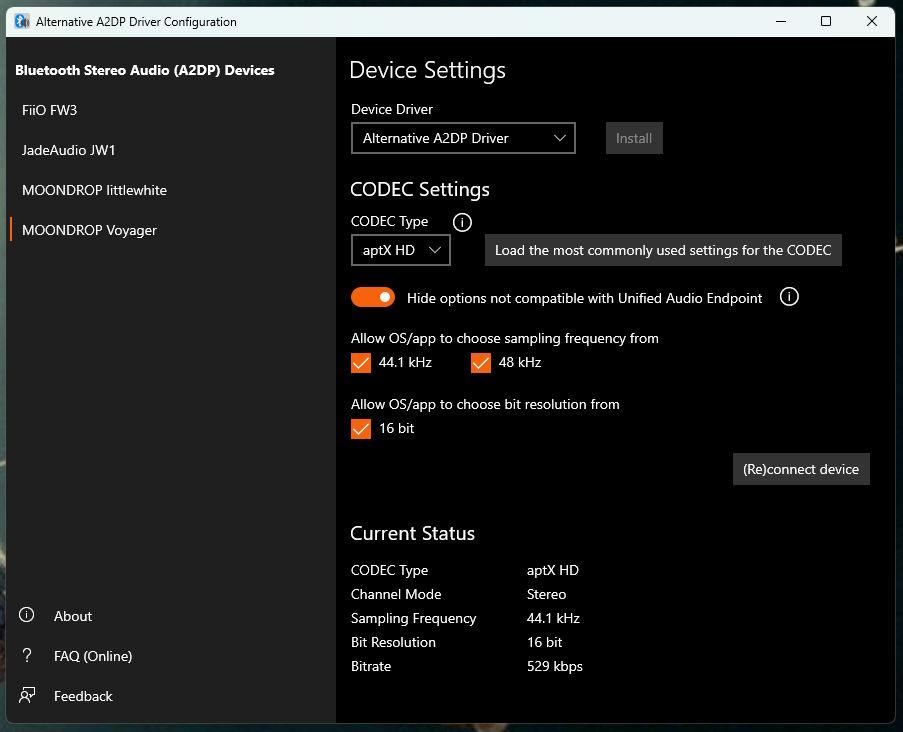Moondrop VOYAGER Review – True Wireless Neckband Earphone with CS43131 DAC
Moondrop Voyager is a Moondrop Little White version with an IEM attached. The attached IEM comes with a high-quality 10mm beryllium-plated dynamic driver inside.
The new Moondrop Voyager is a true high-fidelity neckband wireless earphone with an integrated high-performance DAC chipset. Moondrop has designed the Voyager with a CS43131 32-bit DAC paired with Qualcomm’s flagship QCC5144 Bluetooth chipset. Voyager comes with a 10mm super-linear beryllium dome composite diaphragm dynamic driver unit. Voyager has a Qualcomm Bluetooth connection with high-definition codec support, including AptX Adaptive, AAC, and SBC.
Voyager features Qualcomm’s latest QCC5144 flagship-level Bluetooth master control chipset. It has a built-in 80MHz CPU core and two 120MHz DSP sample processors. It ensures stable wireless Bluetooth connectivity promising a lag-free experience for the users.
Moondrop Voyager comes built with integrated high-resolution audio circuitry that ensures a pure sound experience for the listeners. It includes a 32-bit CS43131 DAC chip that provides exceptional Dynamic Range and Ultra-Low Distortion performance greatly enhancing the output quality and resolution.
Moondrop Voyager supports LHDC HiFi Bluetooth audio transmission protocol. It offers first-class Lossless wireless signal transmission delivering pure audio beyond CD quality levels. Enjoy your music to its full lossless quality wirelessly with the Moondrop Voyager. It also supports other high-resolution protocols such as AptX Adaptive, etc.
The Voyager takes full integration with the Moonodrop Link application and enables up to 10 different tuning options using DSP profiles. It also enables precise adjustment using PEQ (Parametric Equaliser function).
What’s in the box
Features
- True HiFi Wireless Neckband Earphones.
- Integrated High-Performance 32-bit DAC (CS43131).
- Qualcomm’s Flagship QCC5144 Bluetooth Chipset.
- High-Resolution Wireless Codecs support (aptX Adaptive, aptX HD, AAC, SBC).
- 10mm High-Performance Dynamic Driver Unit.
- New-Generation Super-Linear Beryllium-Plated Dome Composite Diaphragm.
- Incredible Performance With High Dynamic Range.
- Clean Background With Ultra-Low Distortion.
- Precise DSP Optimization For Moondrop’s VDSF Target Response.
- 10 Different Tuning Options.
- High-purity single-crystal Copper Stock Cable.
- Moondrop Link Integration.
- Powerful Dual-Microphone ENC.
- Bluetooth V5.2 Connectivity.
- Battery Life Up to 12 Hours.
- Price: $129.99
I would like to thank Shenzhenaudio for providing me with the review sample of Moondrop Voyager.
Moondrop Link App
If you download Moondrop Link App V2 and your Voyager comes with an old firmware the App won’t connect. If this happens install Link App V1, connect to Voyager, and OTA update the firmware to the latest version.
After the update, you will see that a new preset EQ feature will appear and you can also switch to the Moondrop Link V2 App which has a cleaner and better look. For a PEQ guide please read my Moondrop FreeDSP cable review.
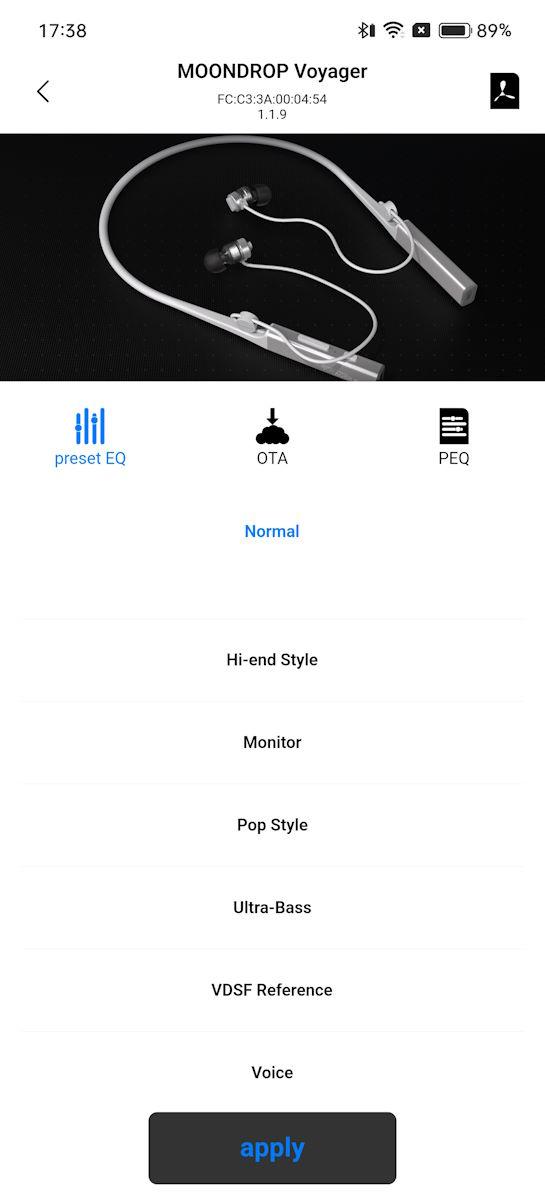
Moondrop Voyager supports onboard preset EQ types and also the PEQ (Parametric EQ) feature.
Sound
Tuning-wise, Voyager is fairly neutral with a sub-bass boost. It’s got clear mids and an inoffensive treble tuning. To put it succinctly, the Voyager is focused on clarity of vocal presence and, of course, the sub-bass.
Bass
Voyager’s bass presents a mixed experience for me. On one hand, it offers a satisfying rumble and thump, but on the other hand, it possesses a persistent thickness that’s difficult to articulate. It’s as if the upper bass lacks some definition as if a portion of its impact is missing. For instance, when listening to kick drums, you encounter a brief, light slam followed by a prolonged decay that feels weightier than the initial impact. Here, by decay, I don’t refer to the speed of the bass, but rather the tonal balance between the sub and mid-bass.
Despite this aspect, In terms of bass quality, the Voyager’s low end is among the best you can get in a Wireless IEM. There’s a notable sense of physicality and grit. This is most apparent in the midbass body of electric guitars – the textured tone of the amps is beautifully rendered…but only if it’s emphasized enough in the mix to be heard. The bass leans on the boomier side rather than punchy and there is a good amount of dynamics. The level of articulation in the bass notes is impressive and decay is finely tuned to never linger more than needed.
The lows maintain speed and remain free from distortion. There isn’t any noticeable bleeding into the mids, although the upper bass occasionally gets overshadowed by the dominant undertones. Nevertheless, considering the price range of these IEMs, the bass is generally of high quality.
Mids
The Voyager excels in the midrange, delivering clear and vibrant tones. Vocals, in particular, receive special attention, exhibiting vividness and naturalness. The spacing and tone are well-executed, resulting in a smooth yet articulate sound.
The midrange notes have a neutral body size, offering good definition and crisp transients. However, some individuals might desire a touch more bite on vocals and electric guitars. Fortunately, there is no shoutyness or uncomfortable resonance in the upper mids. Female vocals are accentuated vividly, while male vocals possess a less chesty quality.
Treble
The treble of the Voyager is very tightly reigned in. In tracks where I anticipate sibilance, it gets right to the brink but never crosses the line. What I like about the Voyager’s treble is that it doesn’t overly dampen the response to tame it, unlike past MoonDrop IEMs. What I don’t like is that it’s almost too reigned in. There’s little space for treble notes to breathe, for the hats and cymbals to shimmer and shine past the crisp initial attack. This is very much a personal nitpick, however. For the majority of listeners who are less tolerant of treble, the Voyager’s level of control is hard to find in most other IEMs, let alone among the budget range.
The treble of the Voyager is very tightly reigned in. In tracks where I anticipate sibilance, it gets right to the brink but never crosses the line. What I like about the Voyager’s treble is that it doesn’t overly dampen the response to tame it, unlike past MoonDrop IEMs. What I don’t like is that it’s almost too reigned in. There’s little space for treble notes to breathe, for the hats and cymbals to shimmer and shine past the crisp initial attack. This is very much a personal nitpick, however. For the majority of listeners who are less tolerant of treble, the Voyager’s level of control is hard to find in most other IEMs, let alone among the budget range.
Soundstage and Technical Performance
The soundstage of the Voyager is fairly constrained. Imaging is better with some stage depth and stereo positioning but there is little height and the center image isn’t particularly focused. The staging of the Voyager isn’t a deal breaker by any means but it does fall a bit behind some of the more recent budget IEMs.
The resolution of the Voyager is class-leading. The budget IEM class, that is. There’s nice microdetail, with little nuances that characterize each note, thanks to the texturing and grit of the Voyager. But at a higher level, the Voyager doesn’t always pick up the more subtle passages and background instrument lines. Coherency is excellent and instrument separation is clearly defined though there isn’t too much space when it comes to layering due to the smaller stage.
Sum-Up
Moondrop Little White costs $89 (without IEM), the Voyager on the other hand costs $129. The real question here is if the attached IEM on the Voyager is worth $40. Well, my honest answer is yes it is. It is a very capable single dynamic driver unit that can transform into many other sound characters with the Moondrop Link App using the PEQ feature. If you are not into the EQ thing, the stock tuning gives one of the best sound performances in the TWS form, sorry, in the wireless neckband form.
LDAC and aptX HD on Windows 10/11 – Alternative A2DP Driver
Alternative A2DP Driver is a device driver that replaces Windows 10/11 inbox Bluetooth A2DP driver and allows you to fine-tune CODED parameters.
Who is this software for?
If your headphones support apt-X HD or LDAC
aptX HD and LDAC can provide higher-quality audio than other CODECs such as SBC, AAC, and aptX. If your headphones support the aptX HD (many Qualcomm chip-based headphones do) or LDAC (most mid/high-end Sony headphones do), and your Bluetooth radio condition is reasonably good, there is no reason not to use it.
Please see the FAQ on how to get stable, high-quality streaming.
If you are suffering from stuttering/choppy noise
A2DP transmits data with error detection and re-transmission. So, if the Bluetooth radio’s signal quality is poor (due to the lack of adequate antenna, interference with other radio signals, etc.) and causes a lot of re-transmission, it will start dropping streaming data packets (or the packet is not delivered on time). This is one of the reasons why you hear stuttering/choppy noise.
If that is the case, reducing the bitrate (the amount of the data transmitted) and creating more time to re-transmit may be able to eliminate packet loss. This will slightly reduce audio quality but significantly reduce the annoying noises.
Please see the FAQ for the step-by-step instructions.
If you want to increase the bitrate of the audio stream
If your headphones are working fine with the Windows inbox driver, you may want to increase the bitrate and enjoy better sound quality.
To do so, you have two knobs. One is simply to increase the bitpool parameter. The other knob is using Dual Channel mode instead of using Joint Stereo, which is used by the Windows inbox driver.
Please see the FAQ for the step-by-step instructions.
If you want to eliminate sound quality loss by the downsampling
Windows inbox A2DP driver supports only 44.1 kHz sampling frequency for SBC CODEC. However, many contents are encoded at 48 kHz, including many video contents. As a result, when those contents are played, they are forced to downsampling to 44.1 kHz.
Alternative A2DP Driver supports all sampling frequencies that your headphones can handle. So, if the media player app you are using allows it, it can dynamically switch the sampling frequency based on the source media and eliminate the audio quality loss by the downsampling.
Please see the FAQ for the step-by-step instructions.
How to use it?
- Select the audio device to which you would like to install the Alternative A2DP Driver in the left pane.
- Switch the Device Driver from “Windows Standard Driver” to “Alternative A2DP Driver” and click on the “Install” button on the right.
You will be asked if you want to make a change to the system. Please select Yes. - Adjust the CODEC parameters to your preference.
New parameters will take effect when the headphones are (re)connected.
Download Alternative A2DP Driver



